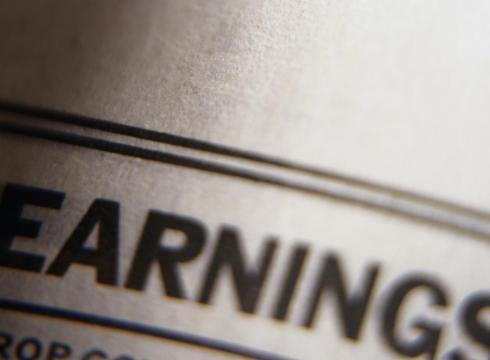by Kara Ng, Russell Investments
On the latest edition of Market Week in Review, Quantitative Investment Strategist Dr. Kara Ng and Head of AIS Business Solutions Sophie Antal Gilbert discussed the recent market selloff and the performance disparities between growth and value stocks this year. They also provided an update on the potential for a second U.S. fiscal stimulus package.
The known unknowns: Culprits of the recent market selloff?
Since charting a new record high on Sept. 2, Ng noted that the S&P 500® Index has fallen nearly 10%. Does this mean the U.S. equity market is experiencing a correction—or could the recent selloff mark the start of a new bear market?
“While 2020 has taught us to be humble with our predictions, the information we have today indicates that September’s selloff is likely just a market correction,” she stated. Ng noted that the downturn in equities is a bit unusual, as market volatility is typically driven by new news. In this case, however, the market’s reaction appears to be primarily driven by the digestion of old news, she said.
“This old news that’s been dragging stocks down consists of the known unknowns: the magnitude of the resurgence in COVID-19 cases, progress toward a vaccine, U.S. elections, the timetable for additional U.S. fiscal stimulus, global trade relations and the progression of the economic recovery,” Ng explained. While there’s some speculation that markets are most concerned over the lack of progress toward additional U.S. stimulus and a second wave of COVID-19 infections in Europe, she said that the overall view and balance of market risks hasn’t drastically changed this month.
Ng added that, in the lead-up to the U.S. equity market’s peak in early September, there were some signs of euphoric sentiment, as well as a few technical indicators that implied earnings expectations for some mega tech companies were too high. “It’s important to note that when pockets of the market run too optimistic, a small reset is normal. Corrections are a healthy part of the stock market,” she concluded.
Why is value still lagging growth? And when could this change?
Shifting to the performance of growth and value stocks in particular, Ng noted that Russell Investments believes in holding a strategic allocation to the value factor within equities, which historically has outperformed the growth factor since 1930. However, recent history has proven more challenging for value stocks, which have lagged growth stocks for the past decade.
That may be changing over the next 12 months, though, Ng said. Already, value stocks have been less negatively impacted by the current pullback than growth stocks—the Russell 1000® Value Index is down 7% since early September, while the Russell 1000® Growth Index is off 11%—although this slight rotation toward value hasn’t been as beneficial as Ng would prefer, due to the very strong outperformance of the growth factor since late March. “Since the March 23 market bottom, the Russell 1000® Growth Index is up 79%, compared to a 48% uptick in the Russell 1000® Value Index,” she said.
An outperformance of growth is unusual during the recovery phase of the business cycle, Ng said, noting that the early-cycle phase usually benefits more cyclical factors, such as value, instead of growth. “The coronavirus pandemic has been unique in this regard, primarily because many of the large growth names—such as Facebook, Apple, Amazon, Netflix and Google—have business models that thrive in lockdowns and online-only environments,” she explained.
That said, Ng noted that since late March, the daily relative performance between growth and value factors—or more broadly, between U.S. and non-U.S. equities—has largely been driven by news relating to the economic recovery. “Value has outperformed growth on days when the news cycle is dominated by promising recovery-related events, such as optimism over reopenings, stimulus in Europe and Japan, better-than-expected U.S. jobs reports or positive vaccine testing results,” she said. On the other hand, growth has outperformed value on days when the headlines involve weak economic data, a resurgence in COVID-19 cases or dovish central banks, Ng stated.
This may continue to be the case over the next several weeks, she said, especially as near-term uncertainty over the course of the coronavirus, November’s U.S. elections and U.S. fiscal stimulus efforts continues. However, by the end of the year, Ng and the team of Russell Investments strategists believe a broader rotation toward value stocks could begin to take place.
“By the end of 2020, U.S. election results will be known, and a COVID-19 vaccine may have been approved. In addition, if there’s not a new U.S. fiscal stimulus package by then, there will likely be one in 2021. So, once we navigate through this patch of volatility, we believe the ongoing economic recovery will lead to a rotation toward cheaper, more cyclical stocks,” she stated.
U.S. fiscal stimulus progress stalls
Ng and Gilbert wrapped up the segment with an update on progress toward another U.S. stimulus package, which Ng characterized as unsatisfactory. “An additional coronavirus stimulus package before the Nov. 3 elections is looking less and less likely,” she said.
The lack of action by the U.S. Congress won’t help the nation’s economic recovery, Ng noted, given that only half of the 22 million jobs lost during March and April have been recovered. In addition, weekly initial U.S. jobless claims for the week ending Sept. 19 rose slightly, suggesting that the easy gains in the labor market are in the past, she said.
“Without a second stimulus package, U.S. consumer income will likely drop. Hopefully, households will have a bit of a buffer, given the high savings rates we’ve seen during the recovery so far,” Ng said, noting that this will be an important watchpoint moving forward.
Copyright © Russell Investments












